MBTI
The MBTI is a useful, easy-to-use personality type tool.
This theory is based on the psychology of C. G. Jung.
The beginning of the book provide the reader with introductory
information about the psychology of personality according to MBTI.
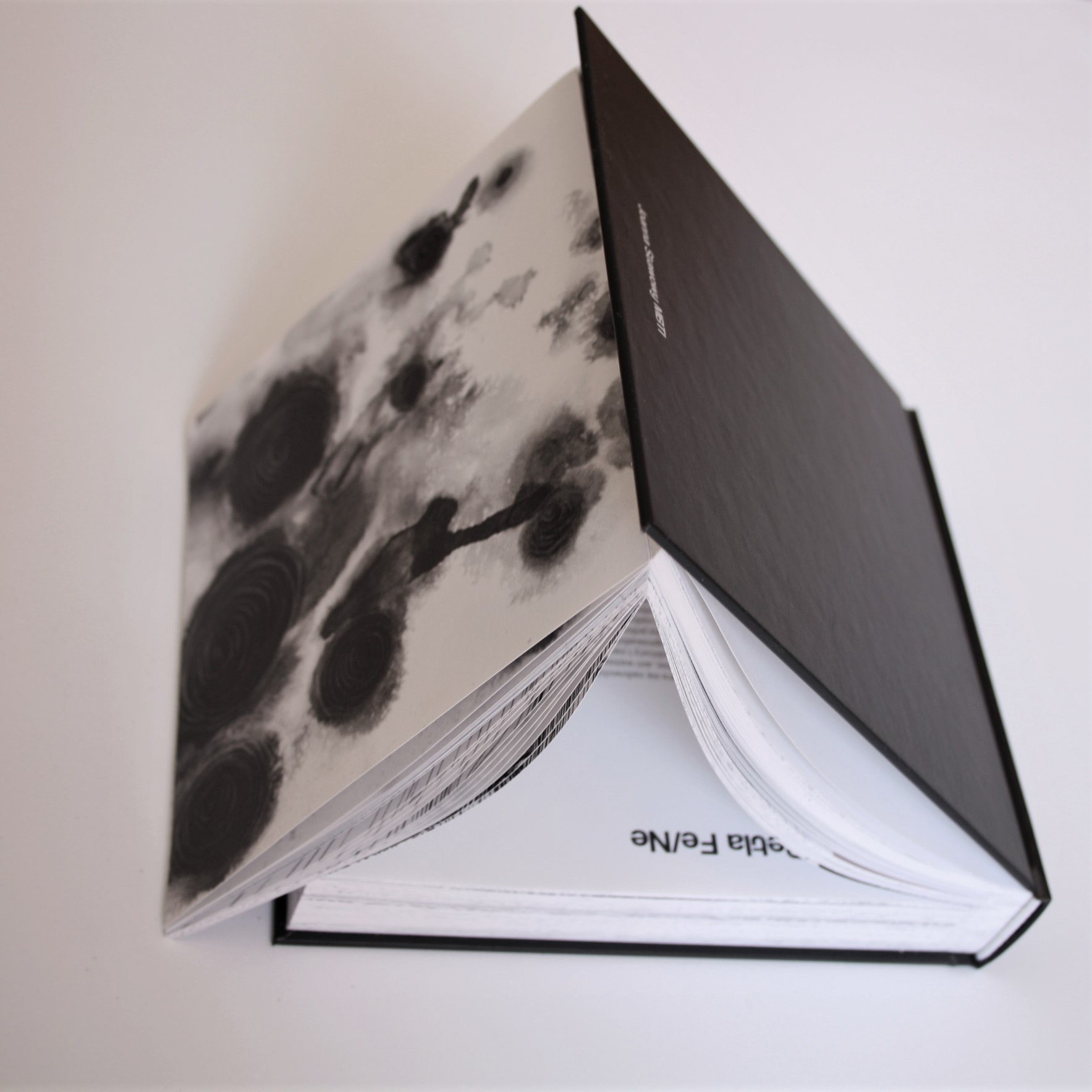

There is a brief historical note (how the theory was created, who created it, etc.),
then a short explanation of why it is worth knowing.
There are also basic information on cognitive functions,i.e. characteristics
of each of the 8 functions, the importance of their hierarchy(the car metaphor).
I also explain the concepts like loop/grip.

There is an explanation of two ways in which a personality type can be assessed:
easier & faster – based on opposite pairs of features, more difficult, longer,
but more reliable – based on cognitive functions.

The most extensive part of the book are the characteristics of 16 personalities – one type consist of 4 spreads (each with an alonge and an appropriate illustration).

Between the personality types there is one spread with graphics, illustrating a smooth transition from one personality to another (as MBTI characters are not completely different from each other and have similar features, so they can be shown continuously).
Personalities pass from one to the other, differing from each other by one letter.
Each personality differs from each other by only one code letter.
In addition, they are arranged according to David Keisey's groups:
idealists, guardians, rationals, artisans.
The book refer to my earlier artwork, presented at the "Abstract Psychology" exhibition.
A sixteen-meter drawing showed all sixteen personality types according to MBTI. They were smoothly diffuse from one to the other. That way I emphasized that, as Jung himself wrote, pure types do not exist.
People with the same personality type are similar in terms of how they absorb energy (introversion/extroversion), process information about the world (intuition/sensing),
make decisions (feeling/thinking) or organize the space around them (judging/perceiving). However, they differ from each other in terms of personal history, upbringing, interests, etc. These differences are called "individual differences".


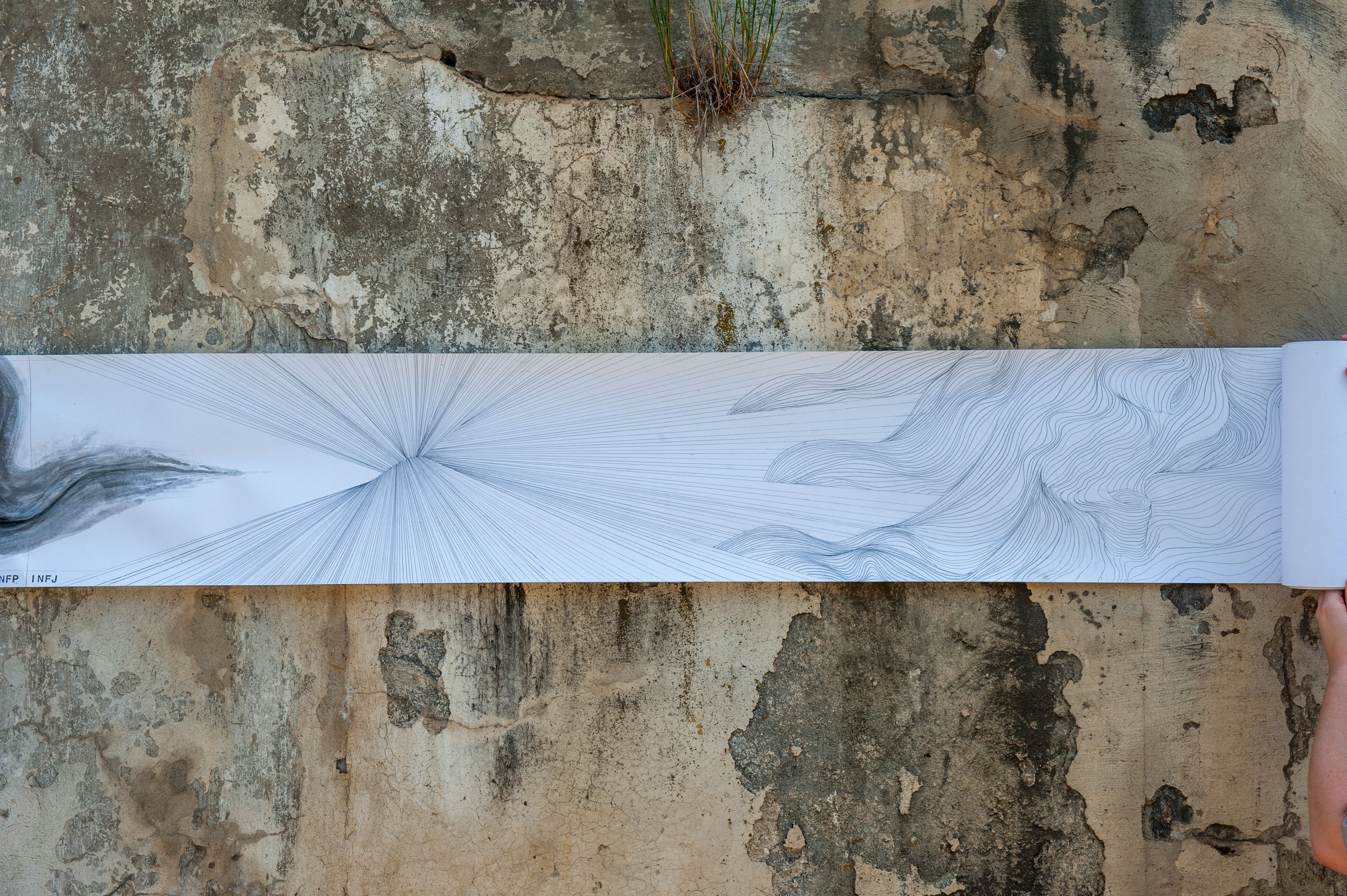

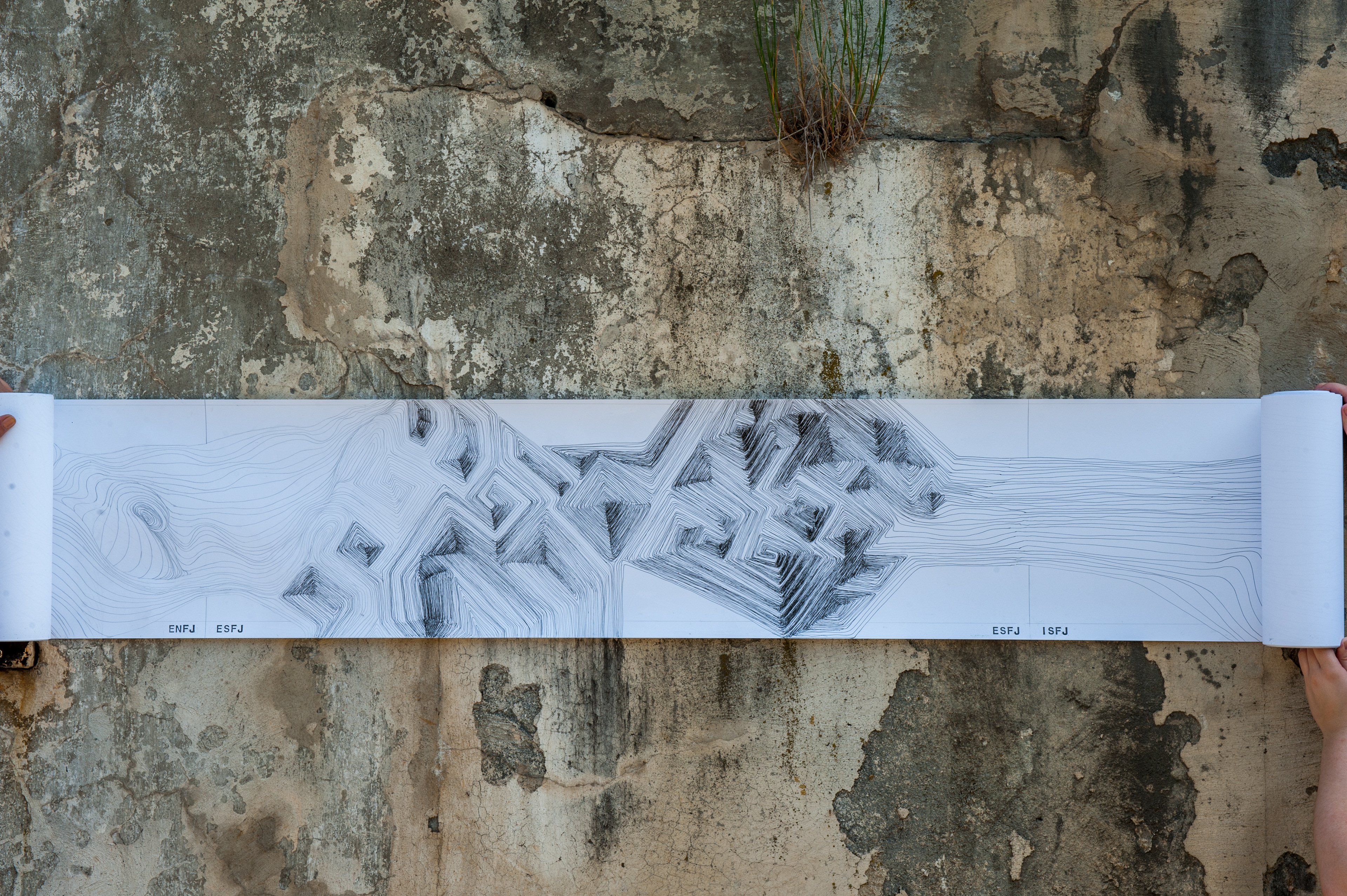
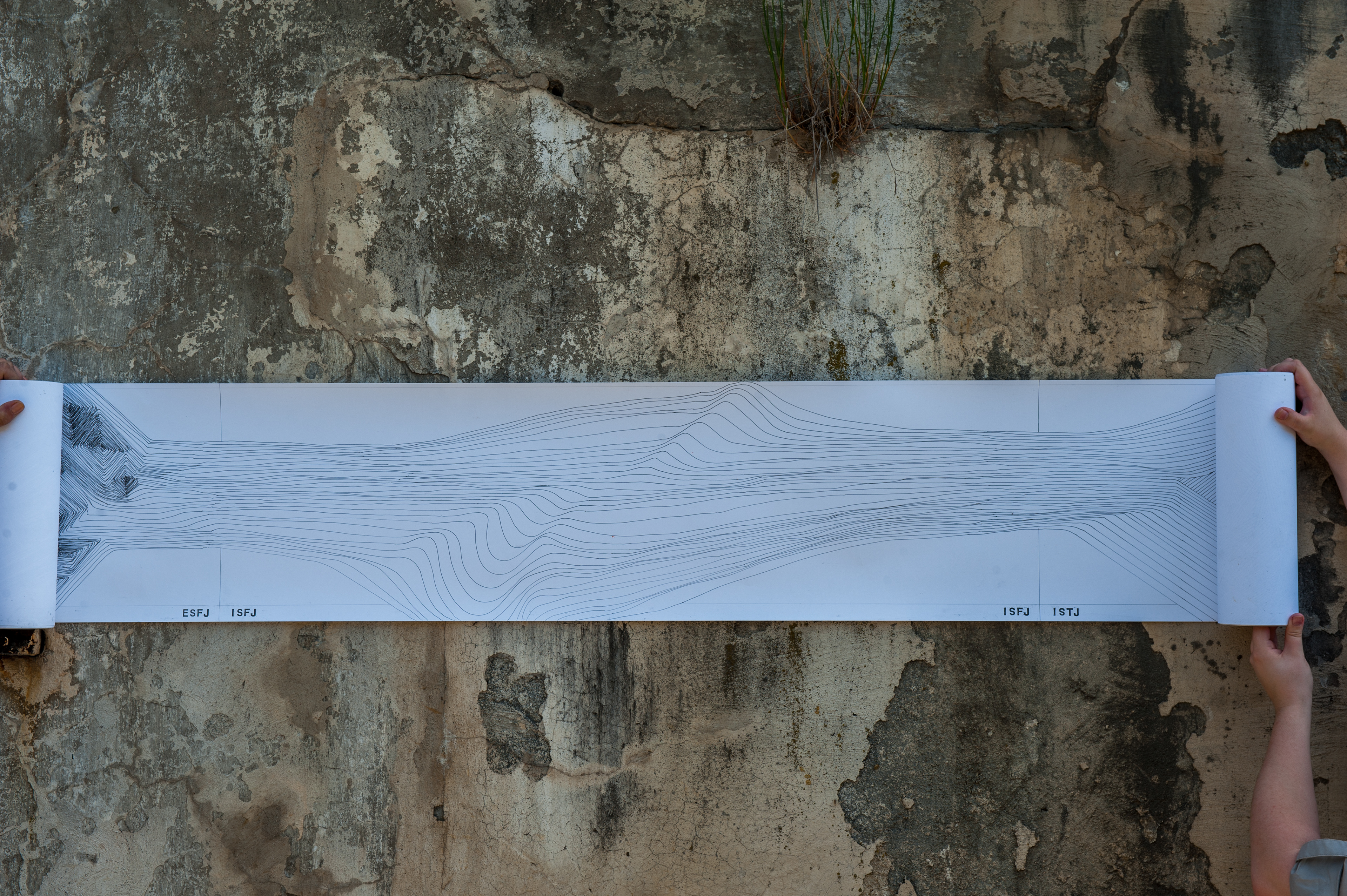
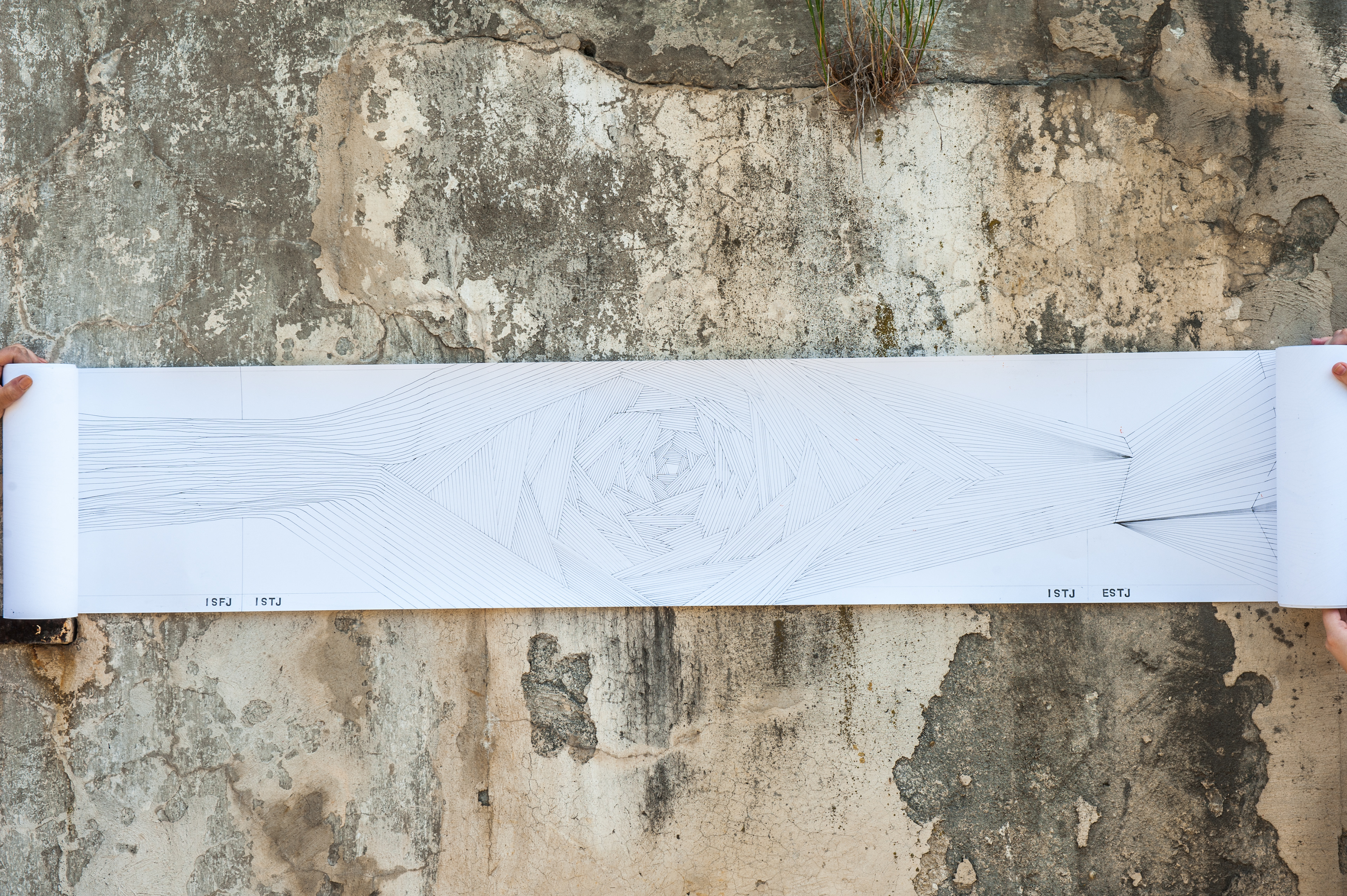
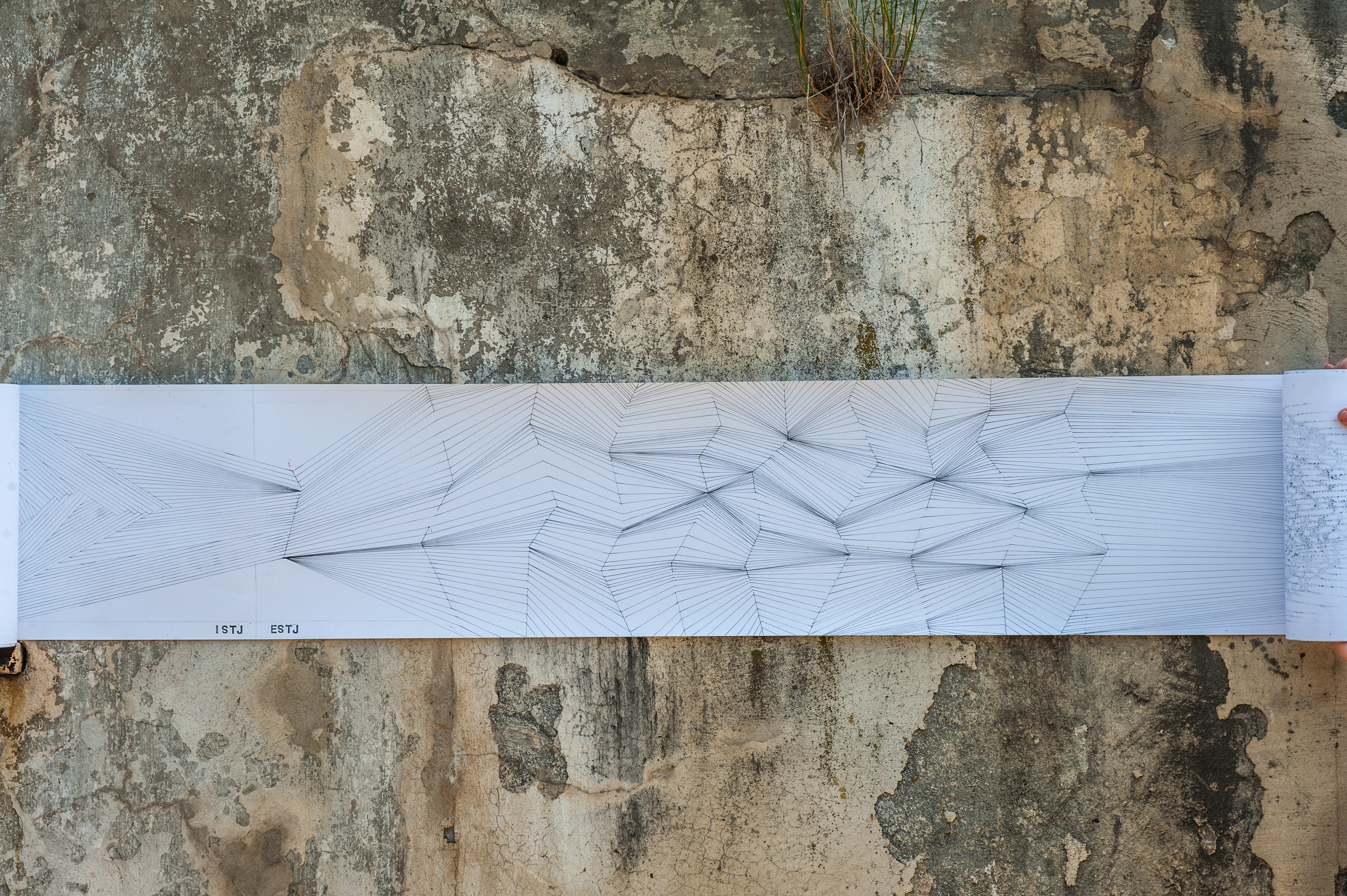




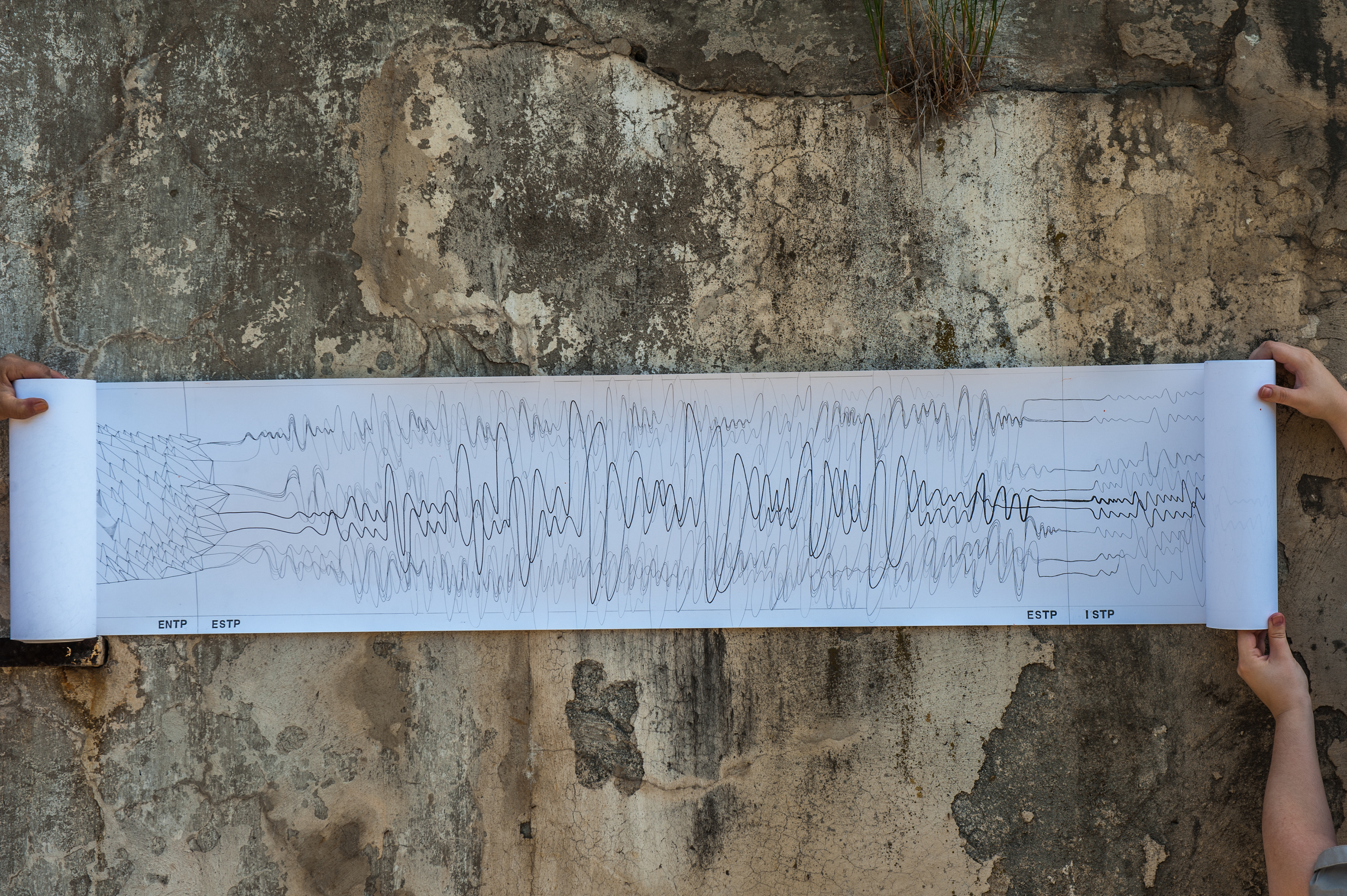
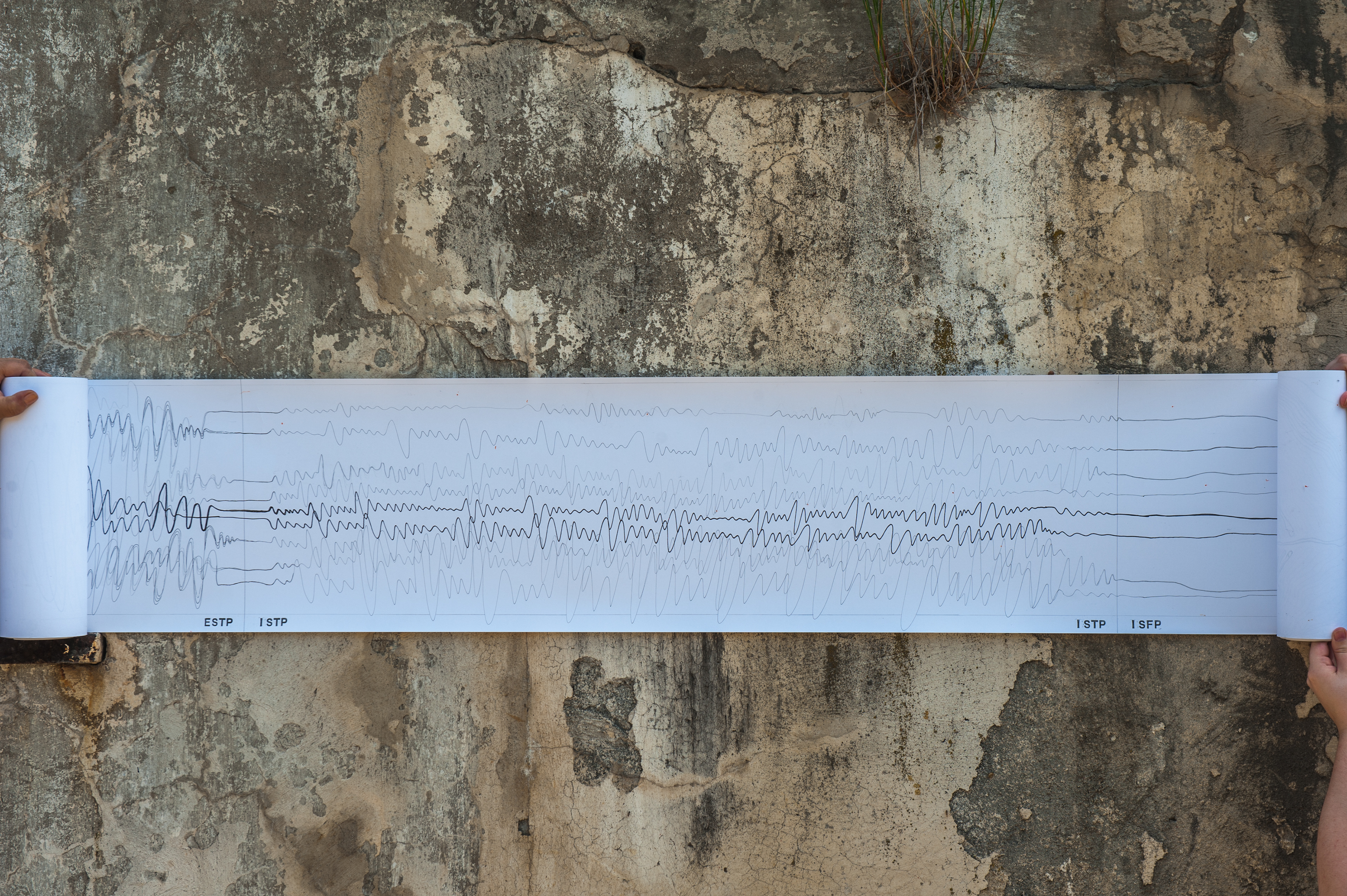

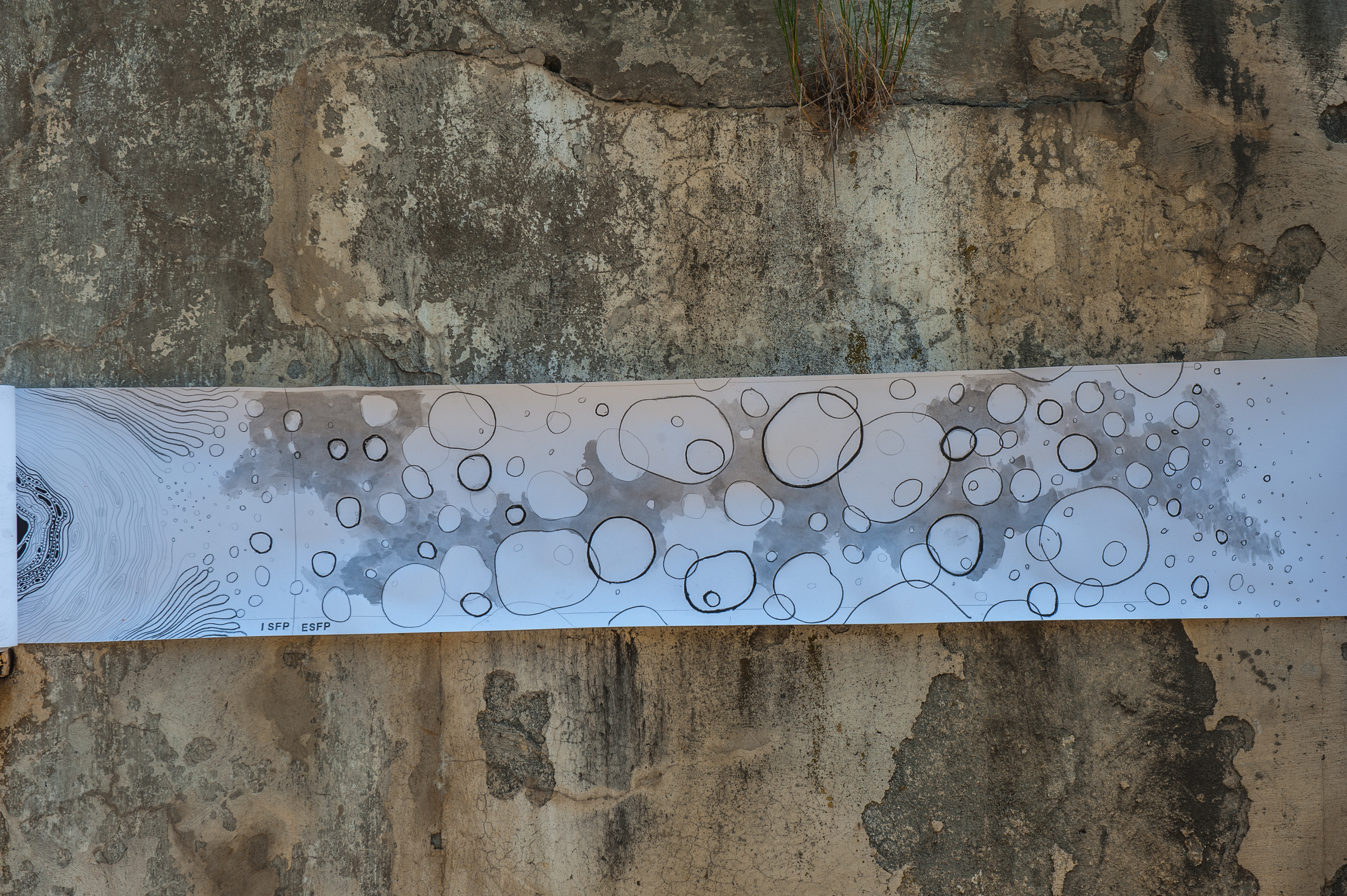
The linear form and assumptions of the drawing I implement to the book.
Personalities pass from one to the other smoothly, differing from each other
by one letterEach personality differs from each other by only one code letter.
In addition, they are arranged according to David Keisey's groups:
idealists, guardians, rationals, artisans.
Thank you for visiting!
